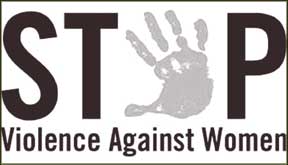Awareness on the Rights of Women
 This week saw the launch, by the Ministry of Child Development and
Women's Affairs, of two books that provide guidance with regard to
women's Rights. One is a commentary on the provisions of the Prevention
of Domestic Violence Act, which came into law in 2005. It is written by
Dhara Wijayatilake. This week saw the launch, by the Ministry of Child Development and
Women's Affairs, of two books that provide guidance with regard to
women's Rights. One is a commentary on the provisions of the Prevention
of Domestic Violence Act, which came into law in 2005. It is written by
Dhara Wijayatilake.
The combination of intelligence and practicality that this commentary
encompasses is perhaps the best indication that, unless we swiftly
develop a better system of training, with greater attention to
identifying objectives and prioritizing them rather than processes, the
best laid plans of governments will get nowhere. Indeed perhaps there
will be no such thing as plans, let alone well laid ones, as we replace
governance with simply reactions to one crisis after another.

Practicality in the pursuit of identified goals is the keynote of the
commentary, and this needs to be stressed when, too often, laws are
interpreted without sensitivity. The law was introduced to prevent
violence against women, but there are still officials who, as the
ministry introduction to the book indicates, consider domestic violence
'as a private matter that needs to be resolved within the family'. Such
an approach obviously leads only to further suffering for women, from
what we are gradually beginning to realize is the most prevalent social
problem all over the world.
It is for this reason that I have been advocating community based
solutions as well, to prevent rather than cure, with local protection
committees that will identify potential problems and deal with them
through counseling and support mechanisms rather than necessarily
resorting to the law.
Social workers
One problem about resorting to the law is the formulaic approach of
some of our magistrates. I am aware of instances in which interim orders
are given, because these are an easy option when examination of the
merits of the case seems complicated, and then those orders last for
longer than a permanent order can.
The reason for a time limit on permanent orders is so that the
problem can be resolved, rather than a preventive mechanism put in place
on a permanent basis. Therefore to have interim orders that go on and on
clearly defeats the purpose of the law, which is to overcome threats,
not keep them looming over women - or indeed over men, for the law is
not gender specific - when they are serious. Unfortunately, with clever
lawyers having recourse to the Act when there is no serious threat but
simply a desire to build up a case for other reasons, magistrates give
in to convenience and simply issue orders which they then forget about,
with no concern for the actual objective of the Act.
This commentary then is a necessity to sensitize law enforcement
officials, Police and magistrates and also social workers, about the
problems women face, and to promote sympathetic action. I hope it will
be the basis now of workshops on the subject, in which the different
executive bodies that have responsibility coordinate preventive and
remedial action. I hope too that better understanding of the problem
will lead to training also of counselors who will be proactive through
community initiatives, since this is a field in which greater
understanding of and attention to root causes of unsocial behaviour can
help with reducing problems.
Preventive mechanisms
The second book that was launched was by Dr Charika Munasinghe, who
also has a distinguished pedigree of committed social service. This book
is a Directory that presents in simple form all laws and policies
pertaining to women. It will be particularly useful to law enforcement
officials, but as the ministry makes clear it should also be used to
social service providers. They also note the role of health service
providers, since this is an area in which much needs to be done to
promote awareness, as well as to institutionalize practical preventive
mechanisms. Unfortunately there is still too much diffidence and secrecy
about matters in which information should be readily available, with
public understanding of the support systems in place.
Both books will contribute significantly to fulfillment of the
National Action Plan for Human Rights, which rightly stresses in several
places the need for greater awareness for stakeholders of both rights
and remedies. It notes the range of stakeholders, and I hope this will
be registered by the Women and Chidren's Desks which the Police have
established in many areas.
As I have mentioned previously, the commitment and capacity of many
of those manning these desks is impressive, but it is necessary to make
this universal, through more training programmes. These should also
involve other stakeholders such as the medical and social workers
mentioned in the Action Plan, and if possible judicial officers too.
For this purpose the two publications the ministry brought out this
week, which will I hope soon be translated into Tamil too, will prove
invaluable tools. But it is also necessary, as the Action Plan makes
clear, to raise general awareness of these issues. The Plan mentions the
need to 'engage the media to formulate a strategy to promote positive
attitudes on the role and status of women as a means to combat violence
against women', and it would be good if the media gave appropriate
publicity to these books, perhaps even publishing extracts from them, to
fulfil its own responsibilities in the national effort to promote Human
Rights. |



